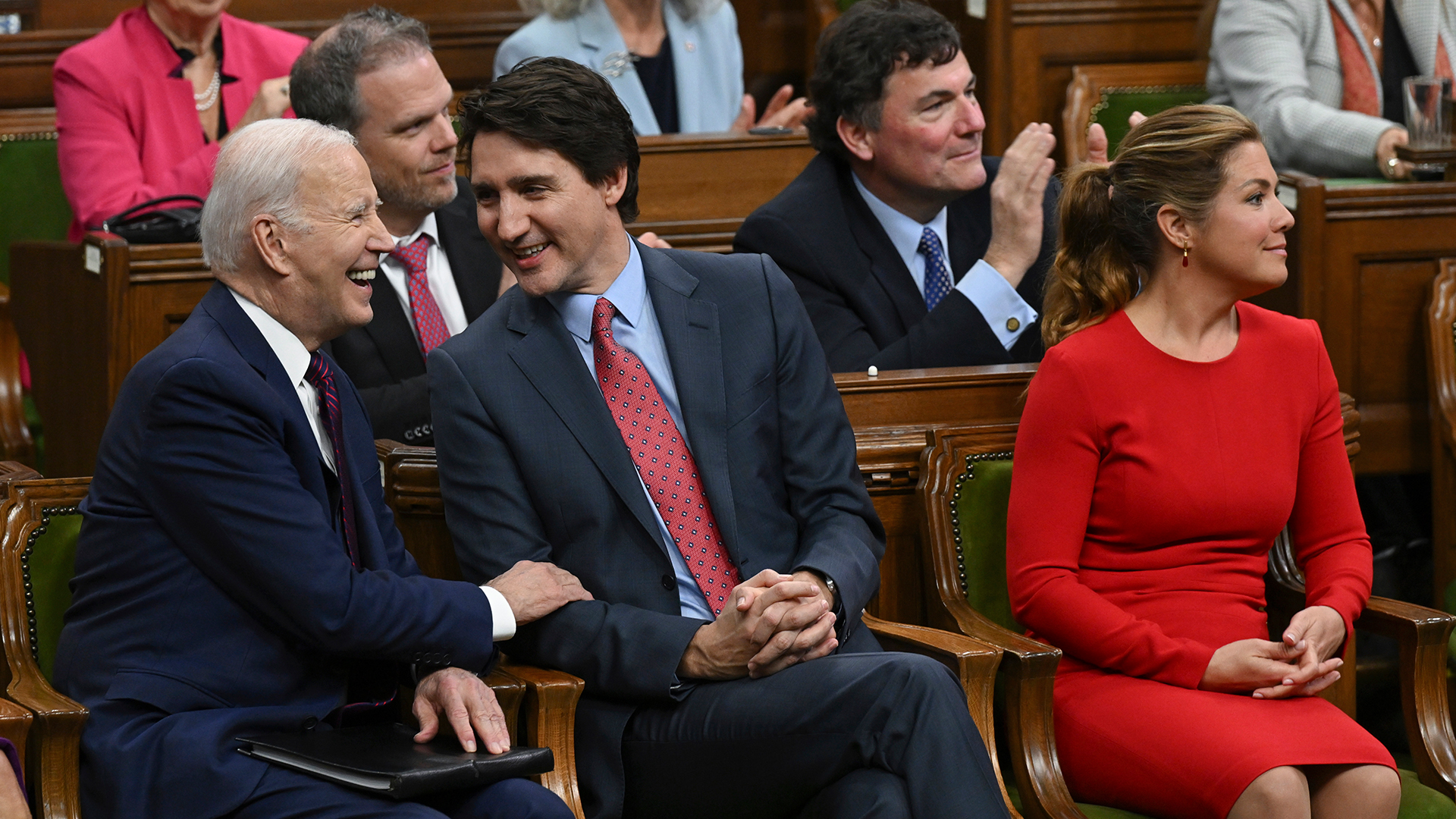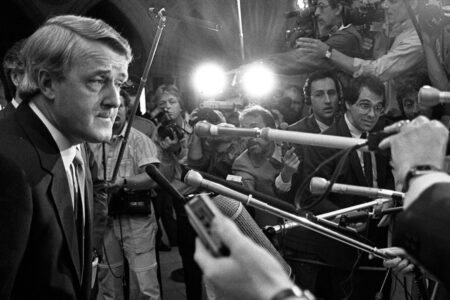
(Version française disponible ici)
It took slightly more than two years for U.S. President Joseph Biden to make an official visit to Canada. The delay was not consequential. A COVID-challenged “virtual bilateral” meeting with Prime Minister Justin Trudeau ticked the box as Biden’s first one-on-one meeting with a world leader, and Biden and Trudeau meet regularly on the international stage at the North American Leaders’ Summits, NATO and United Nations meetings, and Group of Seven and Group of Twenty gatherings, for example.
But Biden’s Canadian trip was significant as the only meeting of the leaders and select cabinet members at which the entire agenda focused on the U.S.-Canadian relationship.
As such, how did it go?
There are three functions of a U.S. presidential visit: symbolism, solutions and signaling. The balance among these three varies based on the country.
Symbolism matters in all international relationships due to the president’s constitutional role as head of state (HOS) in addition to being the head of government (HOG). A presidential visit can resemble a royal visit to Canada or a visit from the Pope. The public meetings and especially an address to Parliament are carefully designed to reflect an appreciation by the president for Canada as a country and for Canadians as friends, allies, and valued customers and suppliers.
The government-to-government relationship between the United States and Canada rests on the foundation of a close relationship between Canadians and Americans, a mutual admiration and fondness that a U.S. president acknowledges and honours during a visit through gestures, phrases, visits to historical or cultural sites, and meetings with individuals.
The symbolic dimension of the Biden visit was successful. The president’s salute to Canadians Michael Kovrig and Michael Spavor, the “two Michaels” held hostage by China for more than 1,000 days, as they sat in the gallery noted their wrongful detention and voiced the admiration of Americans for their suffering and relief that they made it home again. Biden praised Canadian leadership in developing an international campaign that has led 70 countries to sign the initiative against arbitrary detention in state-to-state relations.
Another important symbolic statement was President Biden’s acknowledgement of Canada as a “Pacific nation” that came after the Trudeau government issued an Indo-Pacific strategy in November 2022. Biden’s recognition of Canada’s interests in the Indo-Pacific was both welcome and overdue.
Despite shared values and goodwill, the two countries still have disputes. In the bilateral relationship, the president and prime minister act as a kind of fire department for the relationship. They are not day-to-day managers of issues, but when problems arise, they can respond by investing political capital to overcome obstacles and disagreements.
During the Biden visit, the problem-solving ability of the leaders produced a breakthrough on irregular migrants and asylum seekers crossing in both directions at remote border locations such as Roxham Road, an unofficial border crossing that separates Quebec and New York State. The issue had plagued negotiators for months. A deal was not expected, but was announced immediately prior to the summit and was welcomed by Quebec Premier François Legault.
President Biden also sought Canadian advice and leadership on post-conflict reconstruction in Ukraine and stabilizing the crisis in Haiti. There are no easy solutions to either situation and the leaders will need to rally members of Congress and of Parliament to fund whatever efforts they decide to try.
The third function of a presidential visit is signaling political support for U.S. and Canadian departments and agencies working together. Both countries have nonpartisan public services that work in tandem with a smaller number of political advisers and appointees that answer to elected leaders. These two types of government denizens share dedication to the public interest but operate on different cycles.
The public service takes a medium- to long-term view, looking to sustain activity and support current responsibilities with ever-limited fiscal resources. Political staff are attuned to the election cycles that give voters the chance to return or replace elected officials. At best, a creative tension between these two can generate good public policy. However, it is common for these tensions to slow forward momentum, and when a president and a prime minister clash, public servants and political staff face professional risk if they push resolutions to bilateral issues too forcefully with their quarreling bosses.
After former prime minister Jean Chrétien chose to announce in the House of Commons that Canada would not participate in the Second Gulf War after weeks of talks and without a prior call to then-U.S. president George W. Bush, a chill spread quickly through the U.S. executive branch.
From the author: Biden presidency is a chance for a reset of Canada-U.S. relations
On a more positive note, former U.S. president George H.W. Bush signaled a willingness to consider action on acid rain in part due to his close relationship with former prime minister Brian Mulroney.
Unlike the relationship between Barack Obama and Justin Trudeau, which the U.S media dubbed a “bromance,” Biden and Trudeau have a different dynamic given their 30-year age difference. Whether their relationship can deliver on issues important to Canada is still unknown, but the signals are clear to their respective bureaucracies that they like one another better than either leader liked former U.S. president Donald Trump.
The breadth, depth and scale of the U.S.-Canada relationship requires leaders to intervene at times by signaling priorities and support for co-operation and co-ordination – both to officials and citizens at large. Solutions must have political support, and symbolic gestures by elected officials signal to their people that leaders are maintaining good relations. This makes citizens more amenable to spending their tax dollars or making some other sacrifice in an area of shared interest.
The Biden visit to Ottawa was a success in all three functions. As a result, U.S.-Canadian relations are stronger this week than they were last week.










